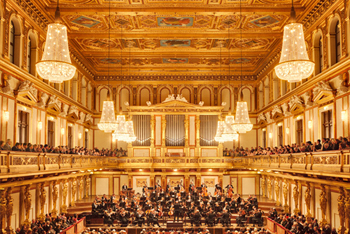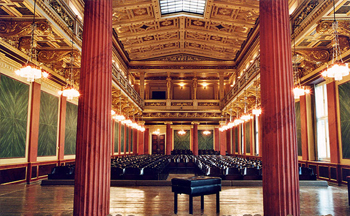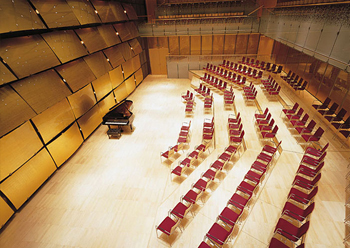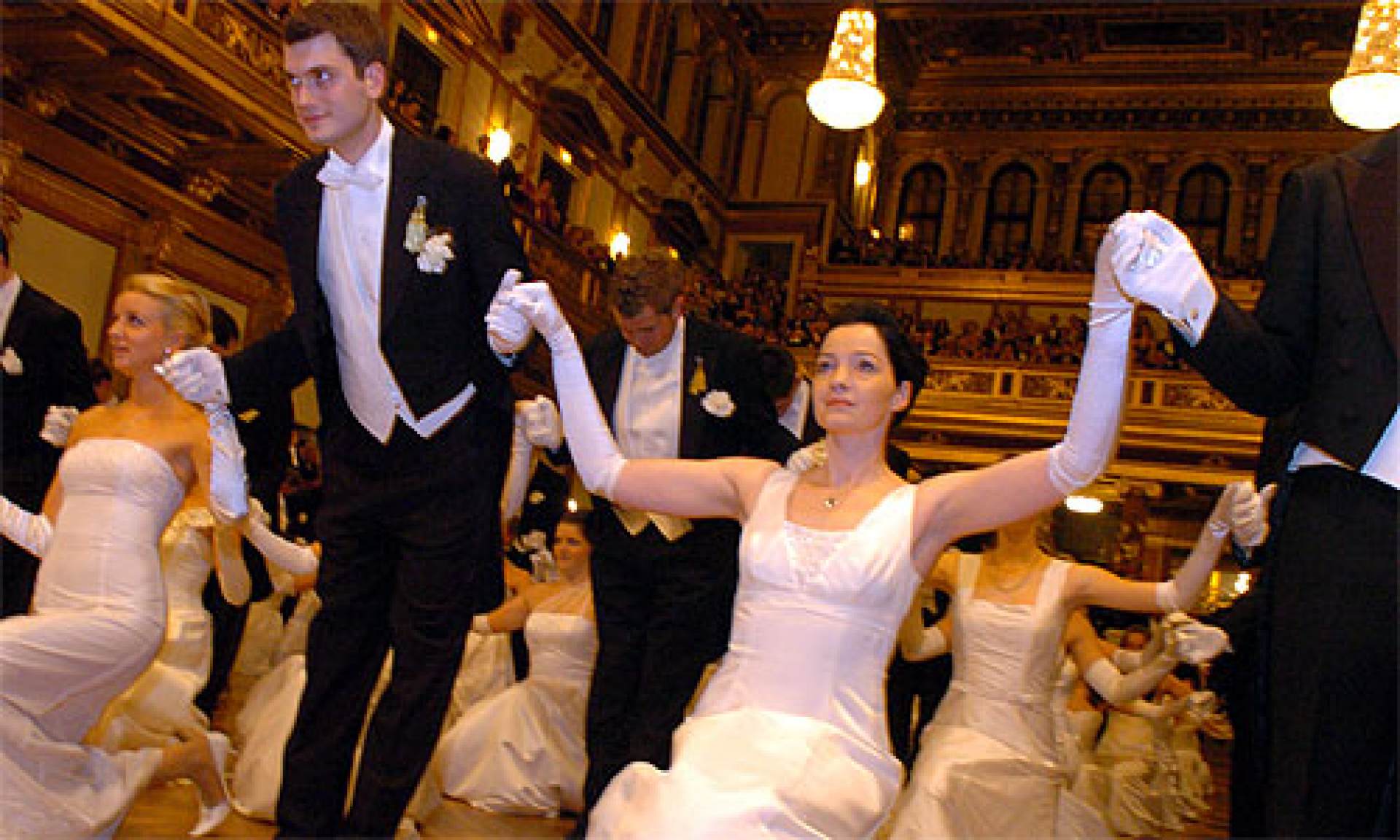Ball der Industrie und Technik
January 2025 | ||||||
|---|---|---|---|---|---|---|
Mo | Tu | We | Th | Fr | Sa | Su |
Ball and waltz history
There are, if at all, only very few ball organizers such as "Der Ball der Industrie und Technik" or its direct predecessors, the Techniker Ball resp. the "Techniker Kränzchen", which may refer to an already 150 years old tradition of their ball and to which so many waltzes and other pieces of music of famous composers were devoted.
The era of industrialization with its many inventions sparked much enthusiasm and great expectations inspiring famous musicians and composers of that time.
In 1842 Josef Lanner dedicated the waltz "Geistesschwingen" (“wings of spirit”) to the "Herren Hörern der Technik in Wien" (“the gentle students of technology”).
In 1847 Johann Strauß father wrote the "Techniker Ball Tänze" and the waltz "Die Adepten" (“the disciples”).
Johann Strauß son composed numerous musical pieces with the same dedication, including
Burschen-Lieder, Walzer, 1848 fellows songs
Electro-magnetische Polka (française), 1852
Motor-Quadrille, 1853
Schallwellen, Walzer, 1854 soundwaves
Sirenen, Walzer, 1855
Libellen, Walzer, 1856 naiads
Phänomene, Walzer, 1857
Cycloiden, Walzer, 1858
Irrlichter, Walzer, 1859 will-o’-the-wisps
Accelerationen, Walzer, 1860
Klangfiguren, Walzer, 1861 acoustic figures
Motoren, Walzer, 1862
Electrofor-Polka schnell, 1865
Josef Strauss , a graduate of the Imperial/Royal Polytechnic Institute in Vienna himself, was suddenly inspired to the waltz "Mein Lebenslauf ist Lieb’ und Lust" when he was conducting at the Techniker-ball in 1868. The slip of paper on which he quickly wrote down the notes of the main melody, has been in the possession of the Techniker-Cercle for a long time, but unfortunately got lost during the 2nd world war. Since that time this waltz has been the traditional opening dance of our ball. Josef Strauß dedicated the waltz "Streichmagnete" and "Combinationen" (1863 and 1865) and the polka française "Tanz-Regulator" (1868) to the Techniker.
Also the dances of the following composers, who dedicated their pieces to the ball committee of the Techniker-ball have mostly to do with technical inventions:
Eduard Strauß
Aus der Visur, Polka française, 1876
Mit frohem Muth und heiter’m Sinn, Walzer, 1877
Telephon-Polka (française), 1878
Mit der Strömung, Polka française, 1879
Hectograph, Schnell-Polka, 1880
Terpsichore, Polka Mazur, 1880
Herzenstelegraf, Polka Mazur, 1881
Karl Komzak
Phonograph, Polka française, 1890
Technikerblut, Polka française, 1892
Magnet, Polka française, 1892
Carl Michael Ziehrer
Reliefs, Polka Mazur, 1867
Wienerisch, Walzer, 1874
Liebestelephon, Polka Mazur, 1893
From the surviving records it is documented that Johann Strauß father, Johann Strauß son, Josef Strauß and Eduard Strauß have performed at our circles and balls in person.
As "Damenspende" (“ladies gift”) the organizers presented artfully crafted miniature models which were current technical inventions and constructions of the time, such as an Edison phonograph or the giant wheel, which could be fixed with a small clasp on the ball dress.
During times of the Austro-Hungarian monarchy (1867-1918), a member of the imperial family was protector of the ball, like Archduke Ferdinand Karl from 1892 to 1911, followed by Archduke Leopold Salvator in 1912.
In Austria’s First Republic (1918-1938) leading politicians such as the chancellor in office took over the patronage of the ball. In the Second Republic, i.e. since 1945, the events of the "Ball der Industrie und Technik" are under the auspices of the Federal President or the Federal Chancellor, who repeatedly personally declared the ball to be opened.
The presidents of the ball preside the young ladies and young gentlemen committee consisting of 80 couples opening the ball with a polonaise, quadrille and the traditional "Linkswalzer".
The arrival of the guests of honor with representatives from business and industry, followed by the rectors of universities and members of the government, emphasizes the significance of the ball for society.
Also the dress code full-length ball dress for women and tails with white tie for men or uniform with distinctions, contributes to give the ball a festive character.
Most of the visitors are members of the Techniker-Cercle or among their friends and relatives. Every year many members of the Techniker-Cercle volunteer to serve in representative, organizational and control tasks.
The numerous dance-loving youth, two alternately playing music orchestras, one specialized in Viennese waltz, the other in international standard dances, guarantee full swing atmosphere.
The ball reaches its atmospheric peak at the midnight quadrille, which every ball guest can join.
Those who have stayed till the traditional ball end at 5 o’clock, will enjoy the finale of the ball to the tunes of "Brüderlein fein", played in most delicate violin sound.
For years now, the "Ball der Industrie und Technik" is marked by true elegance and festive atmosphere, making it the social highlight of the ball season in Vienna.
Program and cast
Musikverein Golden Hall
This building is located on Dumbastraße/Bösendorferstraße behind the Hotel Imperial near the Ringstraße boulevard and the Wien River, between Bösendorferstraße and Karlsplatz. However, since Bösendorferstraße is a relatively small street, the building is better known as being between Karlsplatz and Kärntner Ring (part of Ringstraße loop). It was erected as the new concert hall run by the Gesellschaft der Musikfreunde, on a piece of land provided by Emperor Franz Joseph I of Austria in 1863. The plans were designed by Danish architect Theophil Hansen in the Neoclassical style of an ancient Greek temple, including a concert hall as well as a smaller chamber music hall. The building was inaugurated on 6 January, 1870. A major donor was Nikolaus Dumba whose name the Austrian government gave to one of the streets surrounding the Musikverein.
Great Hall - Golden Hall
 “As high as any expectations could be, they would still be exceeded by the first impression of the hall which displays an architectural beauty and a stylish splendour making it the only one of its kind.” This was the reaction of the press to the opening of the new Musikverein building and the first concert in the Großer Musikvereinssaal on 6 January 1870.
“As high as any expectations could be, they would still be exceeded by the first impression of the hall which displays an architectural beauty and a stylish splendour making it the only one of its kind.” This was the reaction of the press to the opening of the new Musikverein building and the first concert in the Großer Musikvereinssaal on 6 January 1870.
The impression must have been overwhelming – so overwhelming that Vienna’s leading critic, Eduard Hanslick, irritatingly brought up the question of whether this Großer Musikvereinssaal “was not too sparkling and magnificent for a concert hall”. “From all sides spring gold and colours.”
Brahms Hall
 "In order not to promise too much it can be said that it has been made into the most beautiful, most magnificent, perfect example of a chamber concert hall that any of us knows in the world.” This was the reaction of a Vienna daily newspaper in October 1993 as the Brahms-Saal was presented to the public after extensive renovation work.
"In order not to promise too much it can be said that it has been made into the most beautiful, most magnificent, perfect example of a chamber concert hall that any of us knows in the world.” This was the reaction of a Vienna daily newspaper in October 1993 as the Brahms-Saal was presented to the public after extensive renovation work.
The surprise was perfect. It was a completely new hall. In contrast to the Grosse Musikvereinssaal, the Brahms-Saal had changed its appearance quite considerably over the years. When and how it acquired that slightly melancholy duskiness that was known to music lovers before 1993 cannot be precisely documented.
Glass Hall
 As a venue for events from concerts to luxury banquets, the Glass Hall / Magna Auditorium is not only the largest of the Musikverein's 4 new halls but also the most flexible in terms of usage.
As a venue for events from concerts to luxury banquets, the Glass Hall / Magna Auditorium is not only the largest of the Musikverein's 4 new halls but also the most flexible in terms of usage.
Hub podiums enable the smooth transformation of the concert hall into a conference centre, the cinema into a ballroom, or the stage into a catwalk. State-of-the-art equipment for sound, lighting, video and widescreen digital projection provide the ideal conditions for half-scenic productions.
The Glass Hall / Magna Auditorium was designed by the Viennese architect Wilhelm Holzbauer. With a height of 8 metres, the hall (including the gallery) can play host to up to 380 visitors.

 EN
EN DE
DE IT
IT FR
FR ES
ES RU
RU JP
JP RO
RO
 Seating plan
Seating plan 



